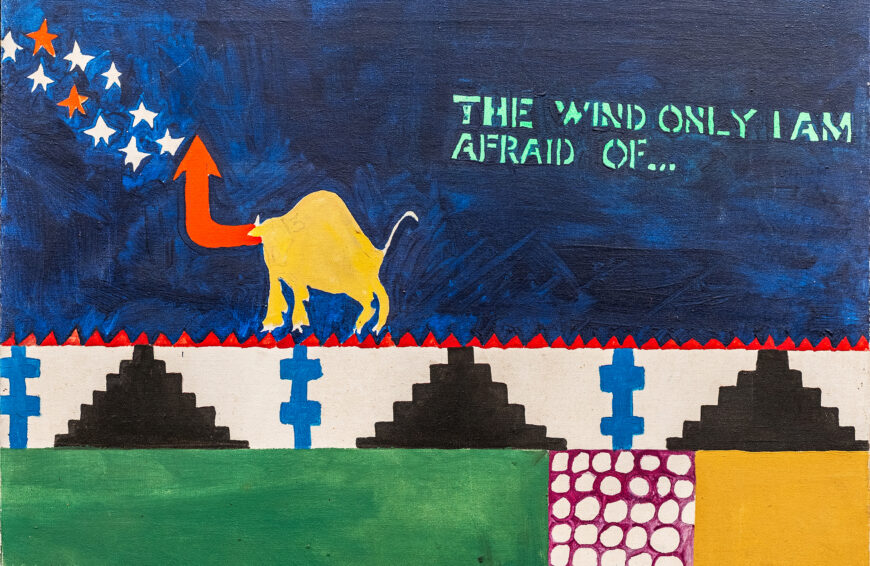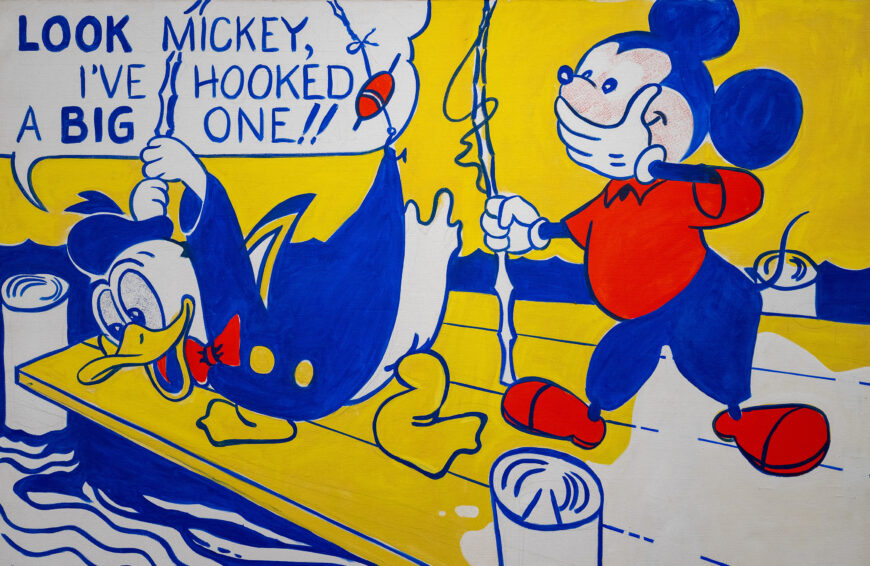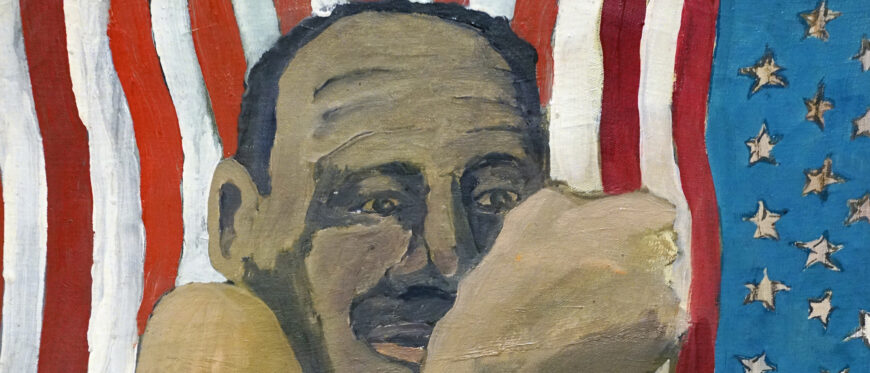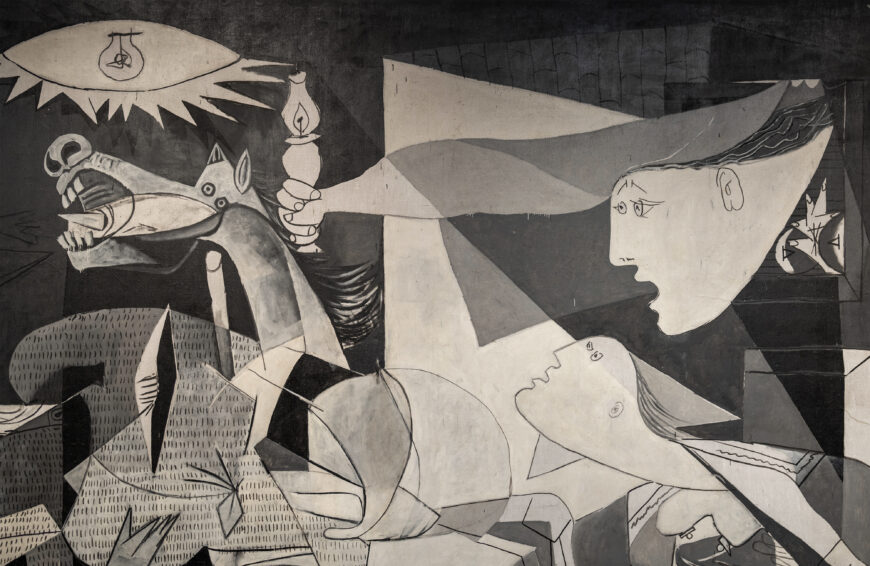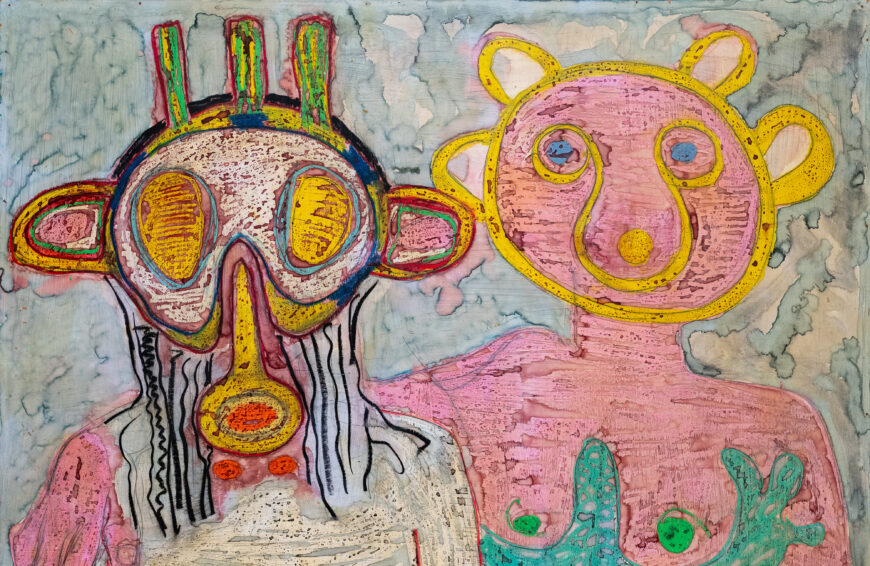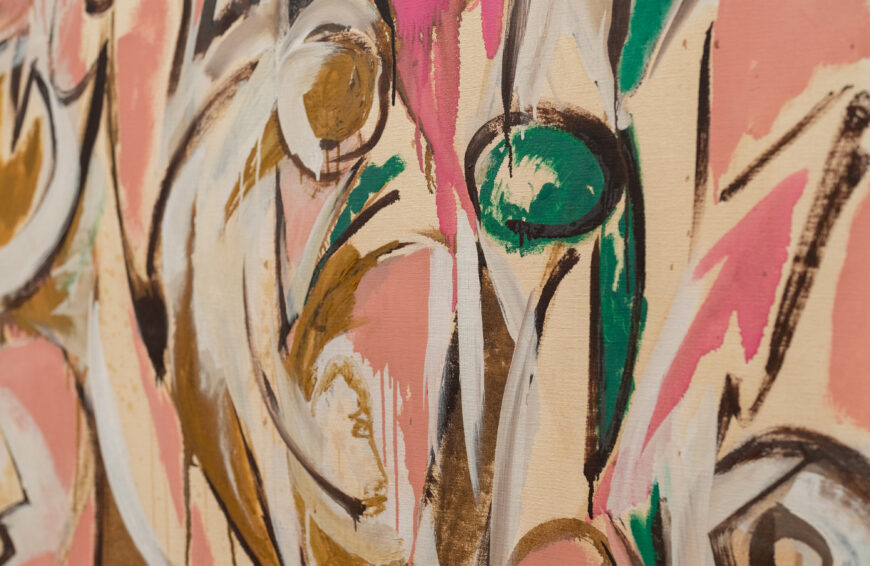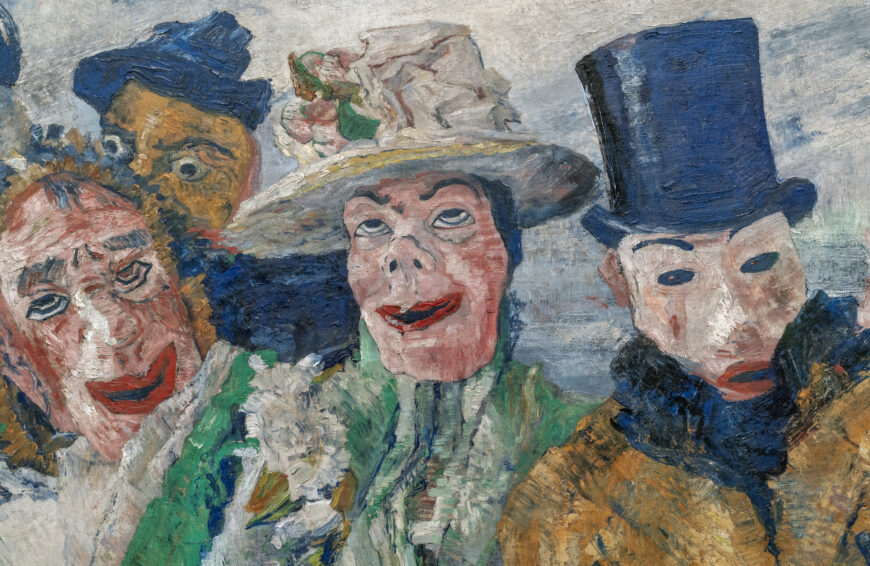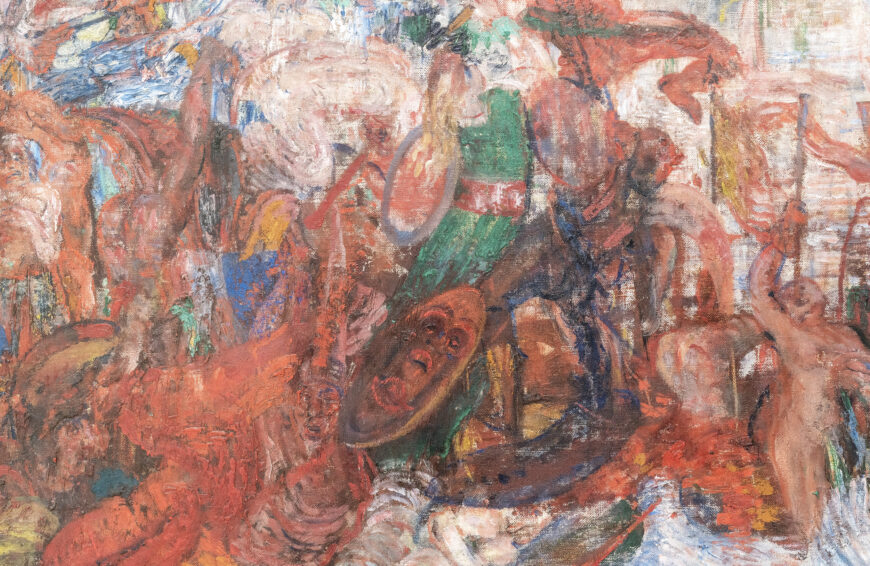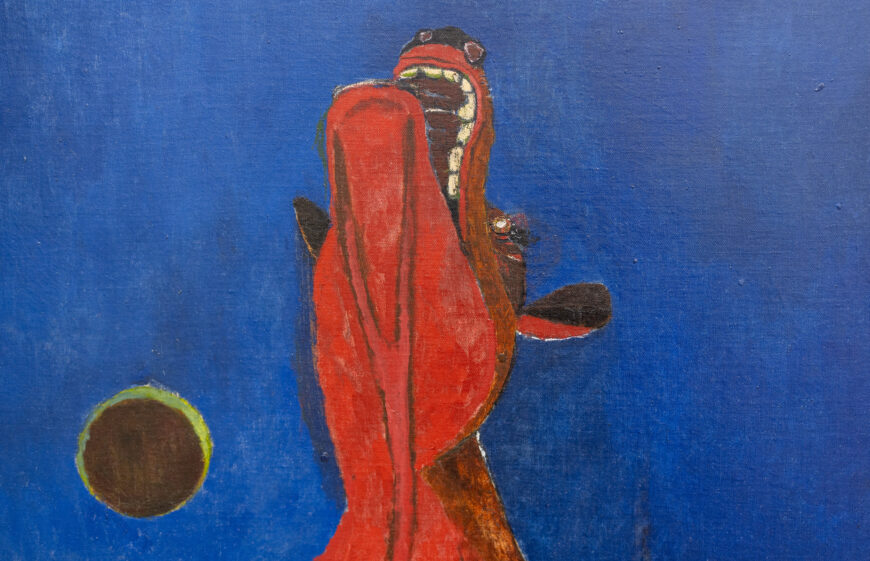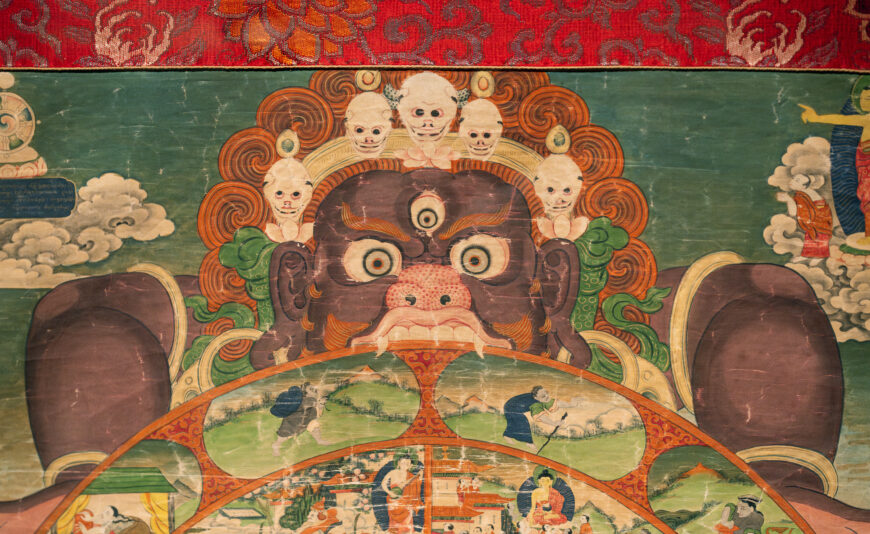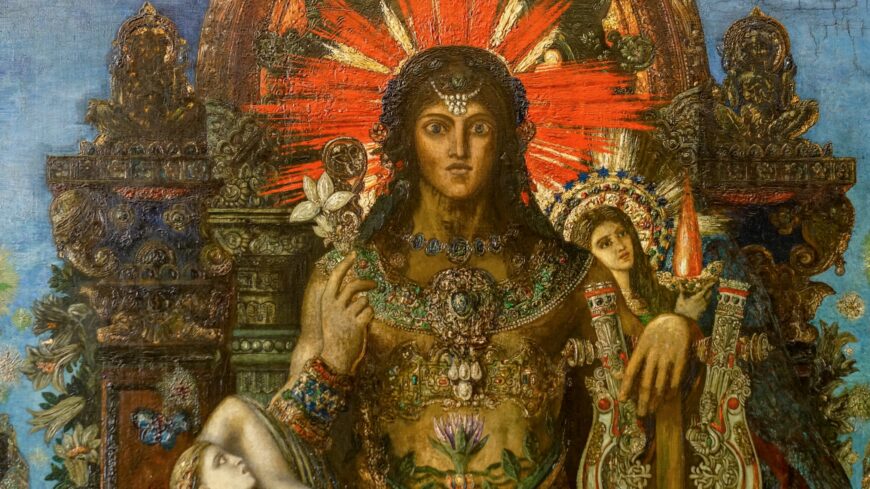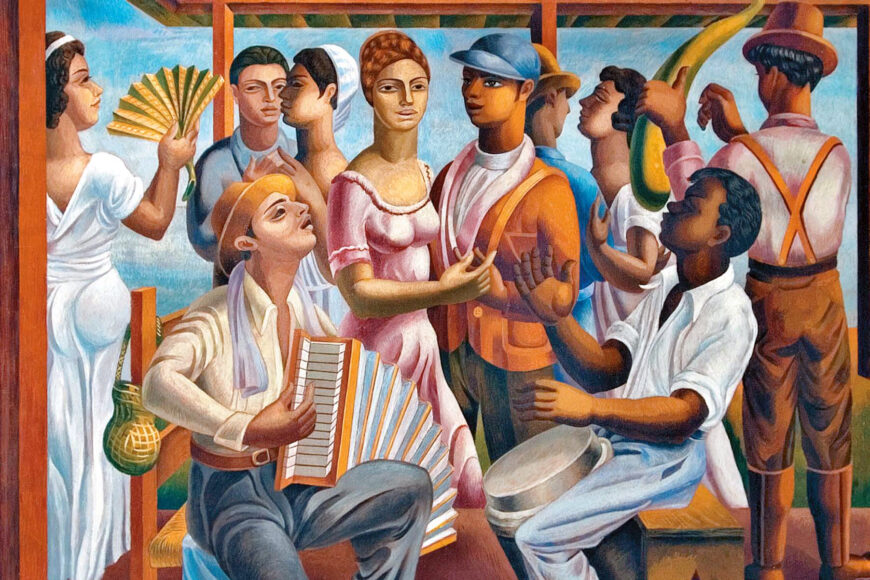Egon Schiele, Portrait of Wally Neuzil, 1912, oil on panel, 32 × 39.8 cm (Leopold Museum, Vienna) Speakers: Dr. Erin Thompson and Dr. Beth Harris
Nazi looting: Egon Schiele’s Portrait of Wally
[0:00] [music]
Dr. Beth Harris: [0:05] We’re looking at a beautiful portrait of Wally Neuzil, by the great Austrian artist Egon Schiele, that has a fascinating history in the 20th century that we want to talk about.
Dr. Erin Thompson: [0:16] It’s a portrait of his mistress at the time, and is very characteristic of Schiele’s work. You can understand why many people really wanted to own this painting.
Dr. Harris: [0:26] Especially because this painting is a companion to a self-portrait.
Dr. Thompson: [0:31] Schiele died shortly before the disruptions that would lead to World War II. Many of his artworks had been collected by Jewish art collectors or gallerists, and this portrait of Wally was one of the many Schieles confiscated by the Nazis.
[0:46] We estimate that somewhere between a quarter to a third of all fine artworks in Europe were moved during World War II, were hidden, were confiscated, were sold, were destroyed.
Dr. Harris: [0:57] Works of art were taken not just from museums and galleries, they were taken from private collections, from churches, from basically every site imaginable.
[1:08] We have this legacy of an enormous number, hundreds of thousands of works of art, that have been displaced, that essentially one needed almost an army to figure out how to return, where they should go, who were the rightful owners. In many cases, the owners were dead. Heirs needed to be identified. This was a very complicated and long process to sort this out.
Dr. Thompson: [1:31] It needed an army. The Allied forces, after the conclusion of hostilities, sorted out all of these artworks that they found in Nazi holdings. They found Nazi high officials with castles full of artworks. They found trains stuffed full of stolen artworks.
Dr. Harris: [1:47] Salt mines filled with great works of art, including things like the Ghent Altarpiece.
Dr. Thompson: [1:52] What the Allied forces did was return as best they could artworks to the country they came from, and then they let those countries figure out how to get the artworks back to their owners or the heirs of owners who had been killed. For example, France still has warehouses full of artworks where the authorities still can’t figure out who they once belonged to.
Dr. Harris: [2:12] Just in the last 20 or 30 years, the legal frameworks, the precedents for how to cope with this have emerged.
Dr. Thompson: [2:19] In part, it’s taking so long because some states — Austria being one of the most notorious — are very reluctant to return works of art. “Portrait of Wally” was the subject of a long-running legal battle, precisely because of this reluctance of the museum in Vienna that held it to return it to the people who were claiming it.
Dr. Harris: [2:39] It’s hard to imagine how the Nazis, who were murdering people by the millions during the war, also were incredibly interested in art. They designated some art as degenerate, but they were also avid collectors. In fact, Hitler planned to create his own museum in Linz of the greatest works of art that he could find in Europe.
Dr. Thompson: [3:01] The Nazis wanted to control the culture of the entire world. That meant if they thought that someone was not worthy of owning a great work of art, they were going to take it away. This Nazi grand plan came to bear on the portrait of Wally, because who owned it in 1938?
Dr. Harris: [3:16] Lea Bondi, who was a Jewish art dealer in Vienna, owned this painting. This painting was part of her private collection that was hanging in her home. She was forced to sell her gallery because there was a law against Jews owning businesses, and so her gallery was forcefully bought, one could say, by a Nazi art dealer.
Dr. Thompson: [3:38] Then this Nazi came to visit her house to finalize the sale, and saw this portrait hanging on the wall and said, “I’ll take that, too.”
Dr. Harris: [3:46] She was planning to flee Vienna the next day, but you can imagine that she didn’t feel that she had a choice at that moment about whether to turn over the painting or not.
Dr. Thompson: [3:57] Lea Bondi escaped from Austria, but she never left behind the thought of this prized possession. For decades, she tried to keep track of where it was, who owned it, and tried to get it back.
[4:09] She trusted one person she shouldn’t have, a man named Rudolf Leopold, who is a collector of art, who came and visited her in London and she said, “By the way, this museum in Vienna has my artwork, could you help me get it back?” What he did instead, was go to the museum and acquire the painting for himself, for his own private museum.
Dr. Harris: [4:28] He actually bartered a couple of works in his own collection in order to get this one. He especially wanted this one because he already owned the self-portrait that this belonged with.
[4:38] We should say that the museum in Vienna, the Belvedere, and Rudolf Leopold, who’s a very powerful collector, all should have known or all knew, I think we can say, that Bondi was the rightful owner of this painting and it had in fact been stolen from her.
Dr. Thompson: [4:54] Eventually Leopold gave his collection to Austria and eventually this portrait was lent to the Museum of Modern Art. There, finally, at last in the United States, the history of this painting started to change.
Dr. Harris: [5:08] When Lea Bondi’s heirs saw that the painting was in New York, they worked hard to alert the authorities and have it returned to them.
Dr. Thompson: [5:16] They thought, at last here the painting is in a climate very sympathetic to the claims of Holocaust survivors and their heirs.
[5:23] They convinced the New York authorities to seize the painting, and the New York authorities kept this painting in storage for more than a decade while the case was fought out in the courts, who was able to show ownership.
[5:36] Interestingly, MoMA argued, “We’ll never get anybody to loan us a painting again if this lawsuit is successful.”
Dr. Harris: [5:43] The chilling effect everyone was worried about never occurred. We should say, too, that it wasn’t just MoMA, there were many other museums that took the same position.
Dr. Thompson: [5:53] Interestingly, if you want to go see the painting today, you would still go to Austria. It’s hanging in the very same museum that denied that Bondi and her heirs had any claim to it. The heirs and the museum settled the case out of court.
[6:06] The museum paid the heirs a large amount of money but got to keep the painting with one stipulation, that next to the painting would be displayed a sign explaining the history of who owned this painting and how she lost it.
[6:21] I wish that many works of art and many museums had similar signs explaining how they came to be in the museum, because often, something that just looks like a piece of beautiful art has a long history of violent collecting.
Dr. Harris: [6:35] In fact, Hitler’s idea of taking everything that he had seized and stolen and making a museum out of it is not actually that unusual an idea.
[6:44] The first incarnation of the Louvre was made of the paintings that Napoleon confiscated as he and his army swept through Europe.
Dr. Thompson: [6:53] Many collections today are based on works taken from countries under colonial rule, when people had as little choice in the matter as Lea Bondi did over whether or not to sell her art gallery to the Nazis.
[7:06] Museums today, they’re going through their own records, doing their own research, to figure out could something have had a Nazi-looted provenance, but the vast majority of museums are not doing similar research, similar repatriations, for objects taken under colonial rule or under other questionable circumstances.
Dr. Harris: [7:24] It makes me think about that glass box in the museum with this very special object in it with minimal information in the museum label, and the ways that we, in the 20th and 21st century, focus on the aesthetics of the object and all the things we leave out when we do that.
[7:44] Lea and her husband were fortunate. They were able to get out of Nazi-controlled Austria, but many other Austrian Jews were not as fortunate. Many of them died in concentration camps.
Dr. Thompson: [7:57] This painting stands in such contrast to official Nazi art, which is all perfect Aryan figures. Here, Schiele shows that he understands people’s frailties and individualities. He is using art to celebrate the different and the unusual, which is exactly the opposite of what Nazis wanted to do.
[8:16] [music]
| Title | Portrait of Wally Neuzil |
| Artist(s) | Egon Schiele |
| Dates | 1912 |
| Places | Europe / Central Europe / Austria |
| Period, Culture, Style | Modernisms / Expressionism |
| Artwork Type | Painting / Portrait painting |
| Material | Oil paint, Panel |
| Technique |


